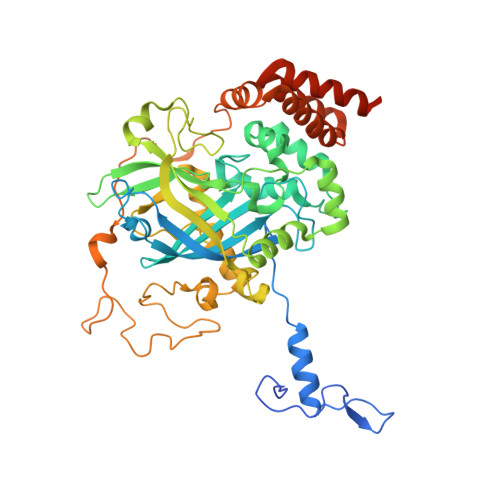Structure of tetragonal crystals of human erythrocyte catalase.
Safo, M.K., Musayev, F.N., Wu, S.H., Abraham, D.J., Ko, T.P.(2001) Acta Crystallogr D Biol Crystallogr 57: 1-7
- PubMed: 11134921
- DOI: https://doi.org/10.1107/s0907444900013767
- Primary Citation of Related Structures:
1F4J - PubMed Abstract:
The structure of catalase from human erythrocytes (HEC) was determined in tetragonal crystals of space group I4(1) by molecular-replacement methods, using the orthorhombic crystal structure as a search model. It was then refined in a unit cell of dimensions a = b = 203.6 and c = 144.6 A, yielding R and R(free) of 0.196 and 0.244, respectively, for all data at 2.4 A resolution. A major difference of the HEC structure in the tetragonal crystal compared with the orthorhombic structure was the omission of a 20-residue N-terminal segment corresponding to the first exon of the human catalase gene. The overall structures were otherwise identical in both crystal forms. The NADPH-binding sites were empty in all four subunits and bound water molecules were observed at the active sites. The structure of the C-terminal segment, which corresponds to the last exon, remained undetermined. The tetragonal crystals showed a pseudo-4(1)22 symmetry in molecular packing. Two similar types of lattice contact interfaces between the HEC tetramers were observed; they were related by the pseudo-dyad axes.
Organizational Affiliation:
Institute for Structural Biology and Drug Discovery, Virginia Commonwealth University, Richmond, VA 23219, USA.















